Top 10 Website Mistakes That Hurt SEO & Kill Your Visitor Experience
by Jennifer van Lent, on Apr 28, 2021 12:48:38 PM
As a marketing professional, you spend valuable resources - in people, in time, and money –to create high-value digital assets, promote a positive online experience and boost visitor engagement. And all of that money and effort can go down the drain in just one click. When a visitor to your Italian website sees your product description is written in Spanish. When your CEO shares his “About Our Team” page only to find his profile written in English instead of Japanese. When your corporate legal counsel receives a notice of website non-compliance.
These are all real mistakes arising from friction, inconsistencies, and errors in localization processes. And they occur every day on the websites of leading global brands. Do you think this is a one-off, and can’t happen to your company? Consider this statistic: Over 80% of global web properties with more than 10,000 pages and 5+ localized websites generate 200 new errors each week, including mixed-language webpage content, translation inconsistencies, and other localization errors.
Mistake #10
Multiple language text on the same web page
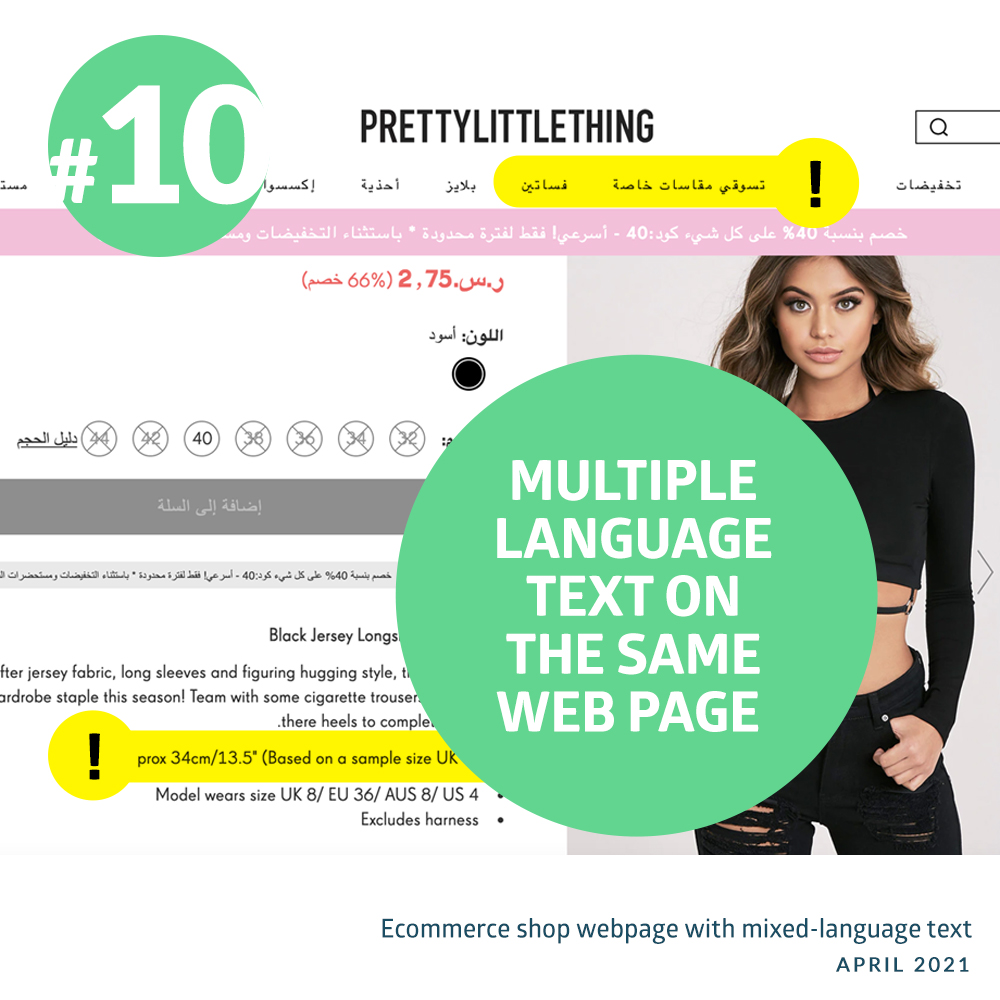
This is a common error caused by the lack of a structured quality assurance step in the multilingual content publishing processes. In speaking with hundreds of localization professionals from all regions and industries, the feedback is that there is often a lack of ownership and/or friction in automated workflows for testing and validating translated content before it is published on a local website. LocHub Insights is purpose-built to solve this problem. This image shows English text on a Dutch website – the untranslated sentence ironically shows an example of the problem which the text calls out: using poor technology solutions in your translation processes.
Mistake #9
Mistakes in webpage language declaration to Google
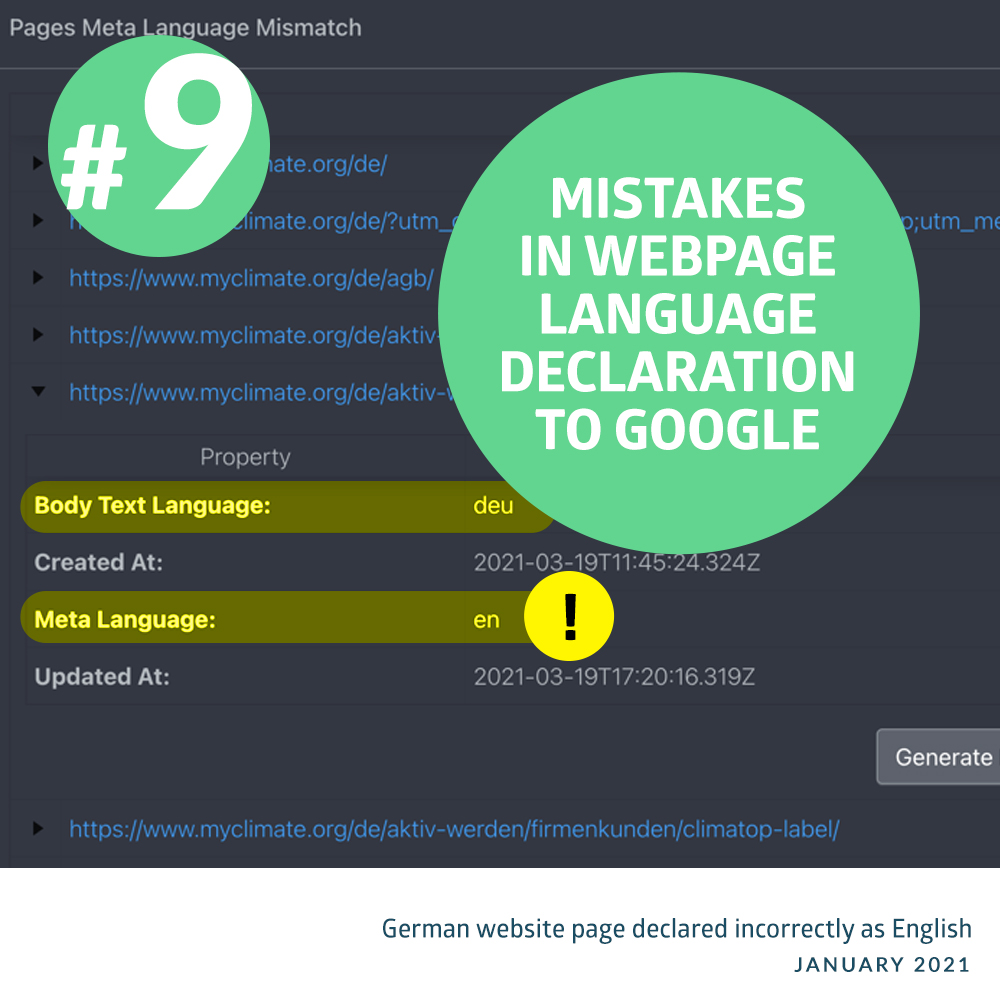
This is a big one. Many of the common website errors that surface in LocHub Insights' dashboard and that are visible in its URL-page detail are caused by incorrectly declaring to Google that the page content is in one language (e.g., English), when the content is actually in German. What’s the big deal, right? Well, it IS a big deal, because this technical mistake will hurt your SEO rankings and miss the opportunity to direct potential search traffic to your website (e.g., if the request only wants to show pages in the searcher’s native language). The outcome: you spend thousands on your translations and your SEO budget, only to see that money fly out the window due to technical website errors.
Mistake #8
Translation errors and website Inconsistencies that hurt brand quality and confidence
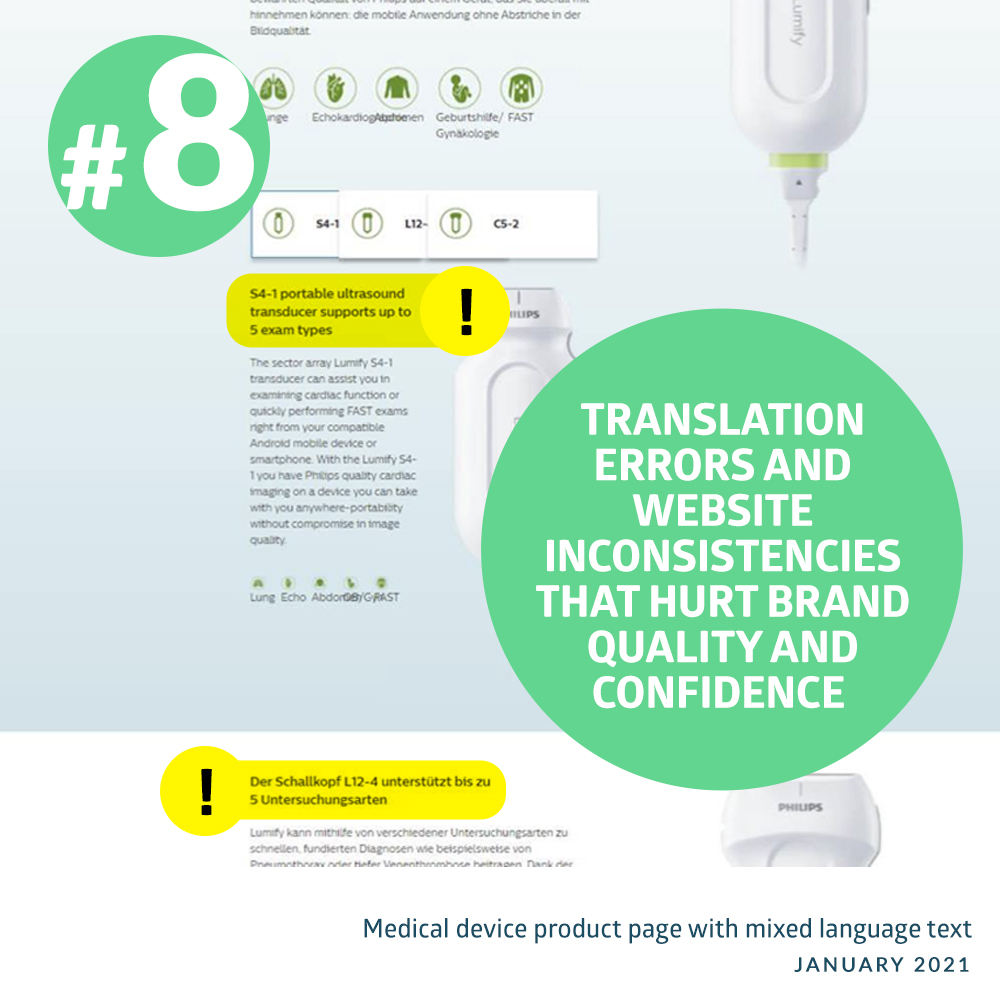
Brand confidence and quality are key attributes for the healthcare and pharmaceutical industries, including medical equipment manufacturers, healthcare and wellness providers, and pharmaceutical companies. If you are a global manufacturer promoting your brand in a local market, one of the quickest ways to tank consumer confidence levels is by publishing a localized website filled with mistakes and inconsistencies.
Mistake #7
Friction in localization workflows for simultaneous shipment processes reduce digital campaign and website effectiveness
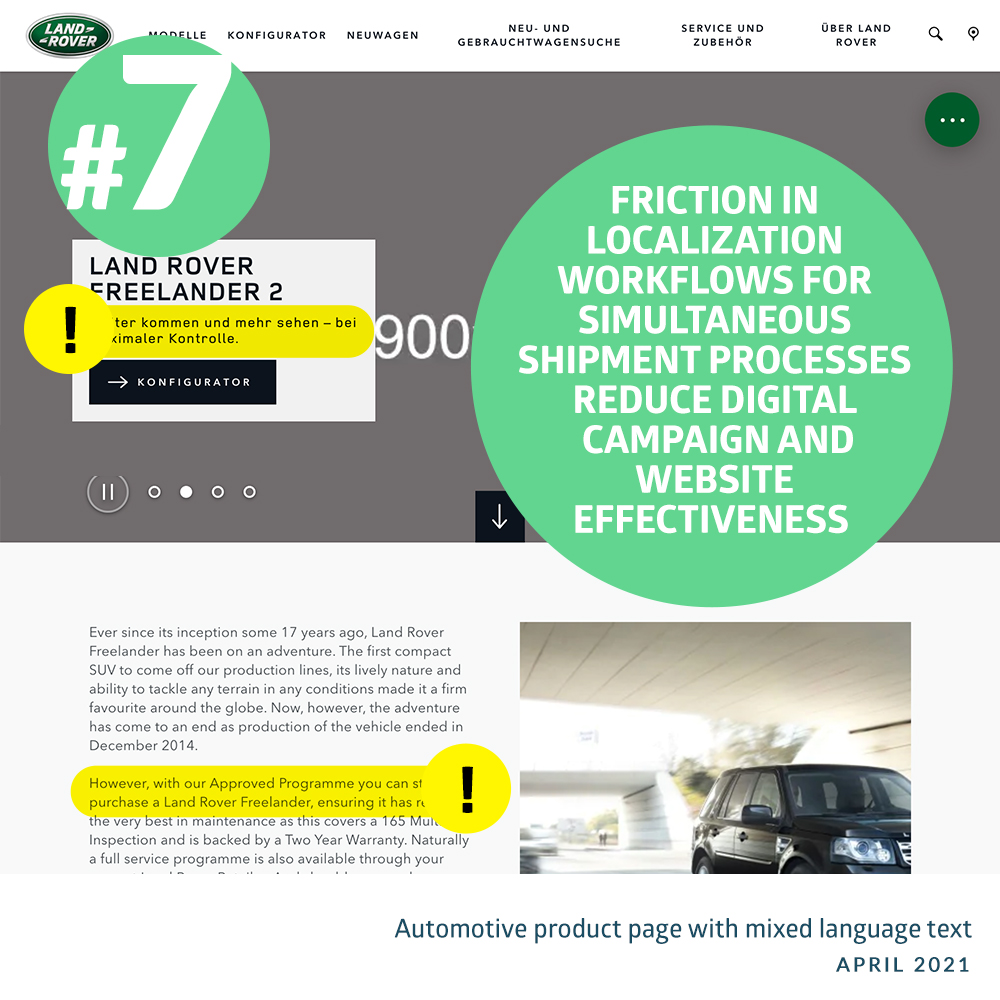
Time to market, global alignment, and customer experience - for the automotive industry, marketing professionals, product managers, and brand managers must consider these three critical factors when planning product launches and marketing campaigns. Simultaneous shipment processes manage the concurrent distribution for all target markets of localized content for new vehicle launches or consumer information (automotive manuals, vehicle updates, recalls). This process involves multiple stakeholders – product marketing, content creation, localization, website operations – to ensure translation and publishing processes are synchronized. Which they often are not. The outcome of friction in simship processes: slower time to market, missed deadlines, competitive maneuvering and poor customer experience.
Mistake #6
Lack of synchronization in global product and brand campaigns leads to poor digital engagement and negative brand experience
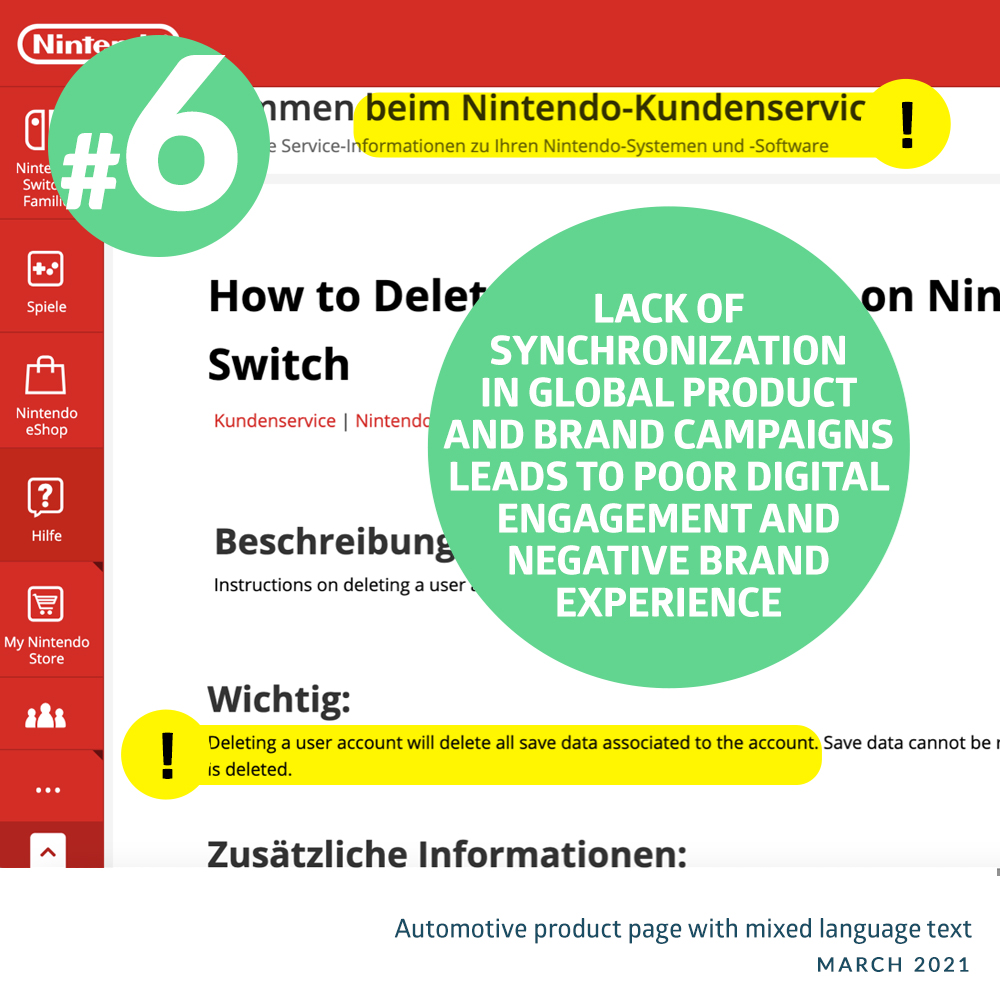
In today's agile and fast-paced electronics industry, product releases are synchronized across markets to ensure global product and brand consistency. This includes simultaneously releasing information about features, price, availability and product support. Delays can be costly, with the risk that staggered product launches impact customer purchasing cycles and devalue local inventories. Friction in your go-to-market processes results in lost revenue when your global product launch across 60+ countries is delayed because of mistakes and errors. An example: a not-so-helpful Help Desk, with English language on a German language support site. Localization mistakes like this one often arises from poor automation and a lack of synchronization across multiple content repositories and digital asset management systems. For example: a translation management system retrieves an outdated document version or content snippet, which is then added to the translation pipeline of automated localization workflows. The result: poor visitor experience and frustrated customers.
Mistake #5
Website mistakes that hurt employee engagement and HR recruiting activities

Naturally, not all localization mistakes are product or brand-related. Virtually every website has a “Careers” page for boosting HR activities and publishing open job positions. Often these activities are managed by regional or country HR teams. Sometimes processes are automated, sometimes not. And mistakes are rarely caught before the job listing or HR initiative is promoted. In the end, talented employees are hard to find and attract, and your public corporate image is critical. Would a qualified Chinese candidate for a key role respond if that position is posted on your website in English (or another language)? Maybe…but why risk the possibility of disqualifying or discouraging high-potential candidates to apply?
Mistake #4
Website mistakes that negatively impact the image of your Board or Executive Team
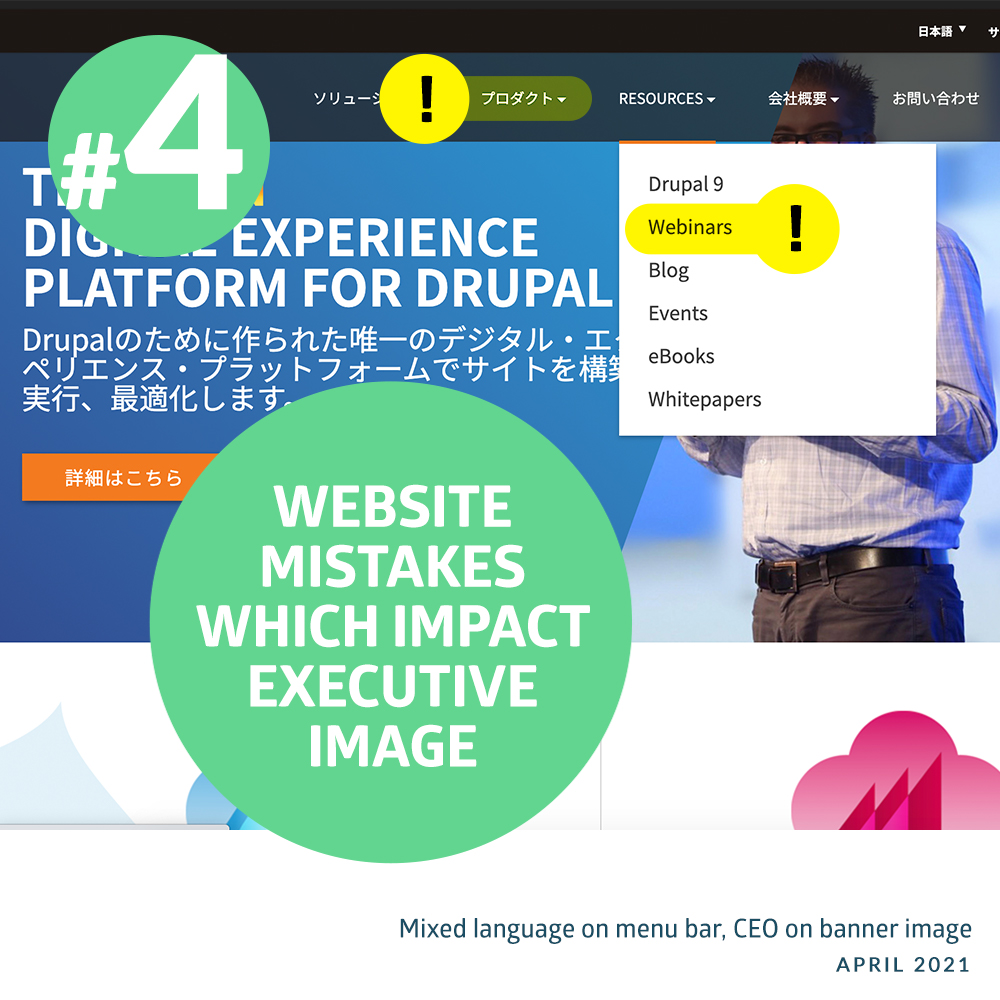
When a C-level executive or Board Member shares his or her “About Our Team” page on a German website only to find his or her profile written in Japanese, the marketing manager will probably get a call. And not a friendly message of congratulations. Or another example: when an executive’s photo is visible on a page filled with localization errors (see image below with mixed language text in English and Japanese, including dropdown menu), this is probably a Priority 1 fix. When we speak with marketing professionals who need extra resources to improve localization processes and enhance visitor experience, examples like these (and others) usually validate the business case.
Mistake #3
Website mistakes with big brand impact
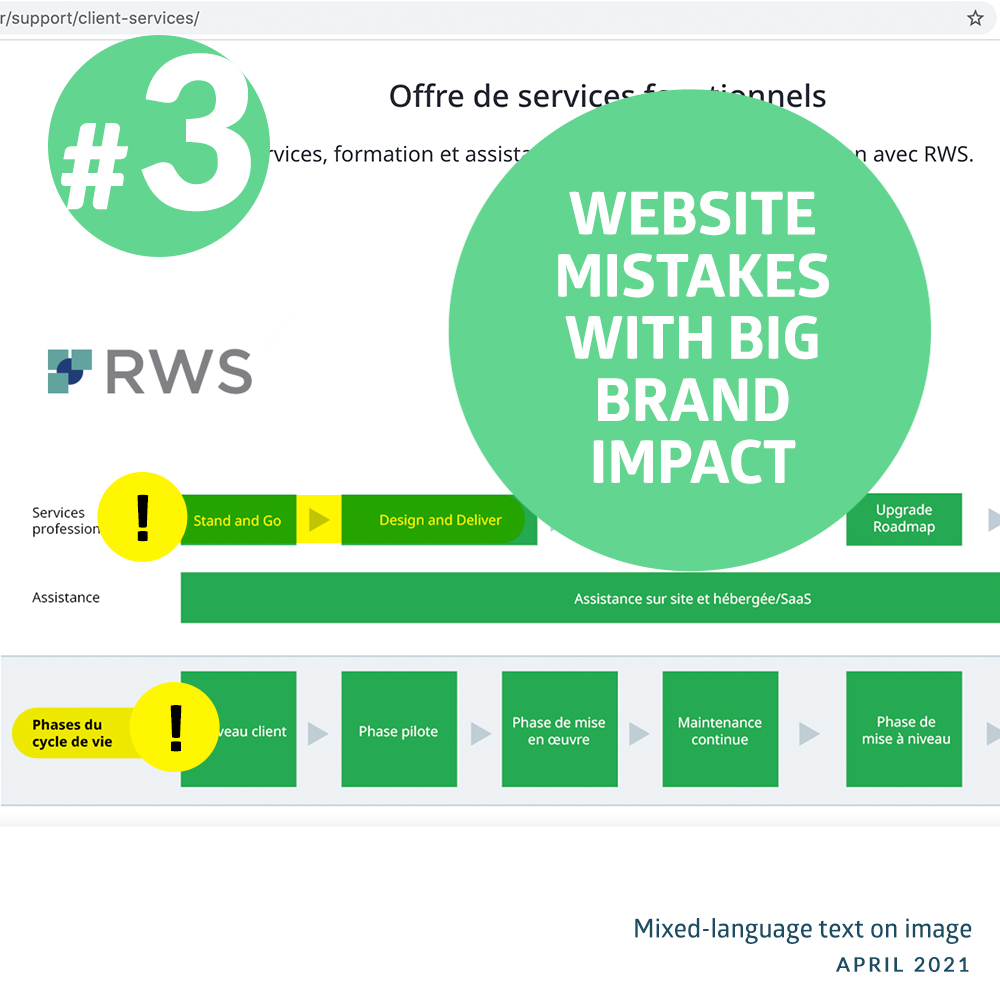
For global brands, executing a successful, high-value digital experience strategy today means personalizing online engagement – in their local or regional context, in their native language. This means that a frictionless localization process is more important than ever before. And big brand mistakes have big market impacts. Marketing students remember the infamous case study about the launch of the Chevrolet Nova automobile in Spanish markets. This image highlights a mistake on the website of a global translation agency: their industry-leading TMS failed to translate text within the image. We found several similar mistakes – along with others - on this language service provider’s global web properties. And the list of new localization mistakes on the websites of well-known global companies grows every hour, every day due to poor automated processes and bad technology. Do you have brand-impacting localization mistakes? What are you doing to ensure your website isn’t on this list?
Mistake #2
Mixed language content or missing translation of your website’s legal terms

Unbelievable as it is, this is another common mistake. Regional marketing teams or marketing operations often forget to translate privacy policies, legal terms and other compliance information into local language. In many cases, these links are either missing or lead to blank pages. While it may not seem to be a marketing priority, it certainly is a legal one. And lack of compliance or failure to adhere to regulatory policies can cost your company a lot more than your annual SEO budget.
Mistake #1
Website mistakes that impact global corporate announcements
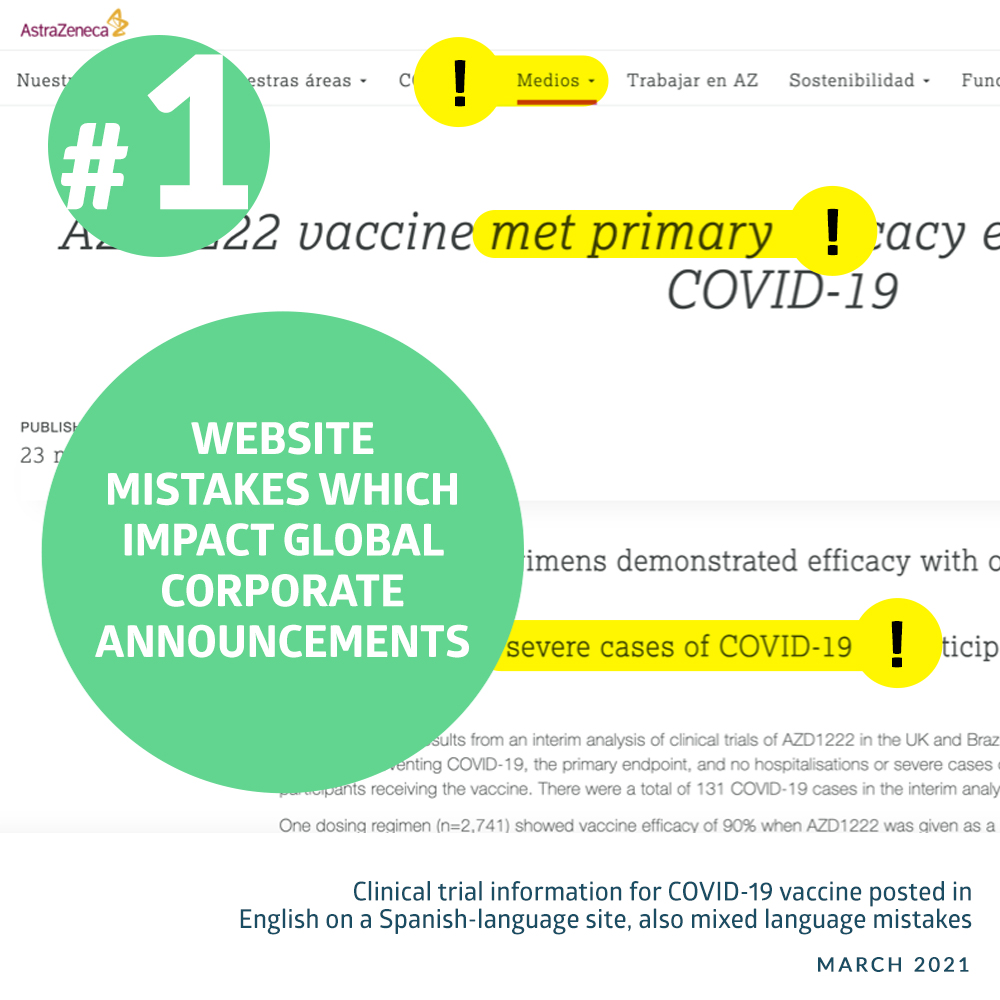
This is the nightmare that keeps a marketing manager awake at night before a global corporate announcement. Global corporate campaigns and press announcements will test every step of your localization process – highlighting gaps and weak links. Turnaround times for critical announcements – such as responding to a crisis or announcing a strategic corporate action - sometimes are measured in minutes or hours, not days or weeks. And every market, every local website, needs to publish at exactly the same time. Financial markets move on big announcements. Major mistakes can have both brand and financial implications.
Our mission at LocHub is to take friction out of multilingual content publishing workflows and other steps in the localization process – enabling marketing teams to boost their digital brand in new regions and accelerate growth in existing markets. With LocHub, we help you go global - with confidence, with ease, and with freedom. And with no drama.
Although we shared examples of the most common website mistakes, QA Insights find thousands more each day on new websites. If you are interested in a complimentary LocHub Insights audit and report to see how your website stands up to the quality test, feel free to request a free Insights report.



